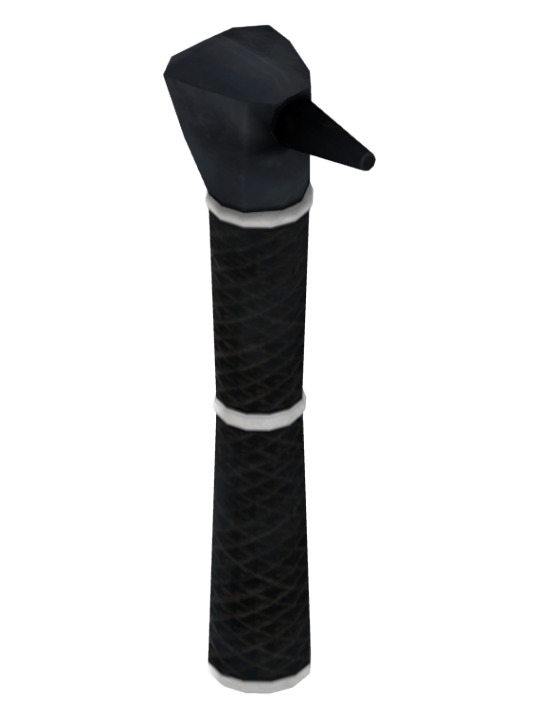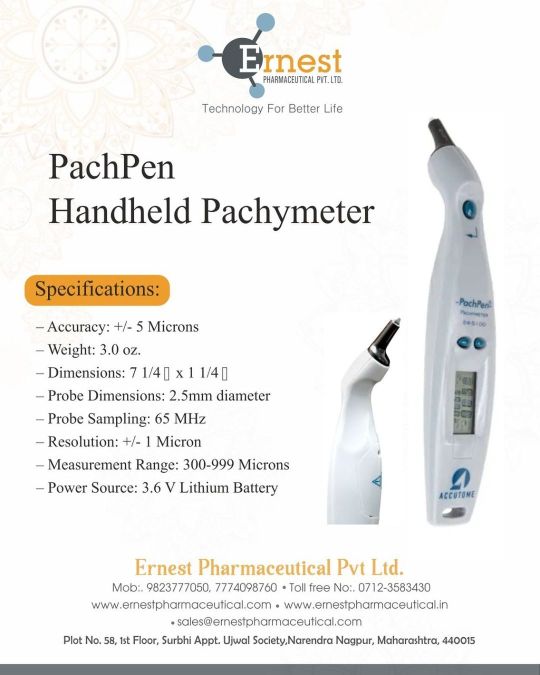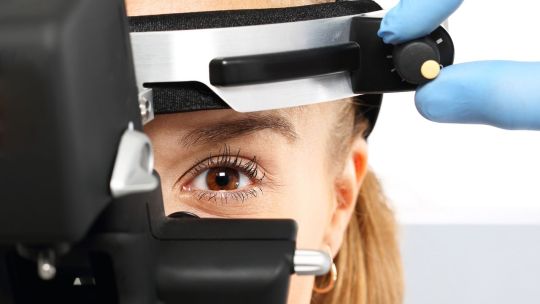#Ophthalmoscope
Text
Ophthalmologist: Use your left eye to examine your partner’s left eye, same with the right, if you don’t want to accidentally kiss.
Student: Is that genuinely the reason why it’s done like that?
Ophthalmologist: Probably the biggest one, yeah.
#medicine#med school#medblr#ophtalmology#ophthalmologist#ophthalmoscope#eye exam#accidental kiss#pinned#this is fanfic material
192 notes
·
View notes
Text

Pictured: An ophthalmoscope from Fallout 3.
You can read more about ophthalmoscopes here
#Fallout#Fallout 3#ophthalmoscope#ophthalmoscopy#ophthalmology#ophthalmologist#Can you tell I learned a new word?#fallout wiki#medical instruments#tw
10 notes
·
View notes
Text

#Ophthalmoscope#EyeExamTool#MedicalEquipment#PortableOphthalmoscope#EyeCare#VisionTesting#HalogenOphthalmoscope
0 notes
Text
iPhone Fundus Camera
What is an iPhone fundus camera, and how does it work?
An iPhone fundus camera is an accessory that turns an iPhone into a tool for capturing fundus images. It typically includes a lens attachment and an app. The lens aligns with the iPhone's camera, allowing for the capture of retinal images, and the app facilitates the process by providing a user-friendly interface.
Are iPhone fundus cameras suitable for professional use, or are they mainly for personal use?
While iPhone fundus cameras can provide a basic assessment, they are generally more suited for personal use or as a screening tool. Professional-grade retinal imaging equipment used by eye care professionals offers higher precision and a more comprehensive analysis of the eye.
#health#eyes#eyecare#medical care#medical devices#choroid#Ophthalmic#eye health#medical equipment#Ophthalmology Devices#ophthalmology#Ophthalmoscope#retinal disease#fundus examination#choroida
0 notes
Text

👀 Are you ready to elevate your eye examinations to a whole new level of precision and accuracy? Look no further than the OPHTHALMOSCOPE - your trusted companion in the world of ophthalmology!
👁️🗨️ Why Choose OPHTHALMOSCOPE?
🌐 Precision Diagnoses: The OPHTHALMOSCOPE empowers healthcare professionals with a magnified view of the retina, enabling early detection of eye diseases and conditions.
📚 Educational Tool: Perfect for medical students and residents to enhance their understanding of ocular anatomy and pathology.
🏥 Ideal for Clinics & Hospitals: A must-have for every eye care practitioner to deliver exceptional patient care.
🌈 Experience the Future of Ophthalmology Today!
🛒 Order your OPHTHALMOSCOPE now and witness the future of eye examinations unfold before your eyes. Don't compromise on vision care - choose the best, choose OPHTHALMOSCOPE!
🔗 Click the link below to explore our range of OPHTHALMOSCOPES and take your eye examinations to the next level! 👇
https://lnkd.in/gEQ2uhwN
WhatsApp :+60 16-234 0347
email: [email protected]
1 note
·
View note
Text
A Comprehensive Guide to Setting Up A Physician Assistant Office with the Right Equipment
Setting up a physician assistant office requires careful planning and consideration of various factors. One of the most important aspects of setting up a successful physician assistant office is ensuring you have the right equipment. This comprehensive guide will discuss the essential equipment you need to set up a physician assistant office.
Photo by Anna Shvets on Pexels.com
Examination…

View On WordPress
#Blood pressure monitor#Computer#Equipment#Examination gloves#Examination table#First aid kit#Medical scales#Medical software#Ophthalmoscope#Otoscope#Physician Assistant#Setting#Sphygmomanometer#Stethoscope#Thermometer
1 note
·
View note
Photo

PachPen Handheld Pachymeter #ophthalmosurgery #ophthalmologist #ophtalmology #ophthalmosurgery #ophthalmic #ophthalmictech #ophthalmoscope #ophthalmoscopy #ophthalmologists #ophthal #ophthalmicinstruments #ophthalmicequipment #ophthalmologistapproved #ophthalmologistgram (at Nagpur, Maharashtra) https://www.instagram.com/p/CkczIrbPWmz/?igshid=NGJjMDIxMWI=
#ophthalmosurgery#ophthalmologist#ophtalmology#ophthalmic#ophthalmictech#ophthalmoscope#ophthalmoscopy#ophthalmologists#ophthal#ophthalmicinstruments#ophthalmicequipment#ophthalmologistapproved#ophthalmologistgram
1 note
·
View note
Text
not to be Me but i’m so feral about ten and the fact that he just carries his fucking stethoscope around to use for listening to walls and tech and stuff. the same one rose and jackie were using to listen to his hearts in the christmas invasion. just snagged it and kept using it the entire incarnation.
there’s just something there about the medical motif. like, for someone who isn’t actually a (human, medical) doctor, you’re sure comfortable using medicine’s tools and assuming that persona.
makes it even better when he starts going time lord victorious. he’s going to heal the universe whether it wants it or not.
mad scientist core.
#jules speaks#he has an ophthalmoscope too for literally no reason. it’s attached to the tardis console in the runaway bride#if i had any gif making skills.#okay i’m normal now
17 notes
·
View notes
Text
Ophthalmoscopes: A Vital Medical Device for Eye Examinations

The history of the ophthalmoscope dates back to the 1850s when Hermann von Helmholtz, a German physician and physicist, invented the first basic version to examine the interior of the human eye. Since then, the device has undergone many innovations and advancements. In 1890, American ophthalmologist Henry Gradle developed an improved version of the direct device which allowed for better retinal examinations. In the early 1900s, indirect ones became available which enabled eye inspection without contact with the patient's eyeball making examinations more comfortable. In the following decades, power sources were introduced to provide brighter illumination for viewing the fundus and photo capabilities were integrated to document findings. Modern ones today are highly portable, lightweight digital devices offering advanced imaging, magnification and illumination functions.
Workings
Ophthalmoscopes utilize a combination of lenses and light sources to view the interior structures of the eye. Direct ones hold a lens near the patient's eye which reflects and magnifies the retinal image while the examiner views through an eyepiece. Indirect scopes project an inverted magnified image of the retina onto a lens placed on the patient's forehead, allowing the examiner to observe from a short distance. Both types focus a small bright light beam on the retina using lenses or an optic fiber bundle. Dioptic lenses enable viewing of both the illuminated retina and immediate surroundings simultaneously. Powered ones contain a battery that powers high-intensity LEDs or halogen bulbs. Digital models have cameras to photograph the retina electronically.
Applications in Medical Screening and Diagnosis
Routine eye examinations conventionally involve visualizing the retina, optic disc and macula using an ophthalmoscope. This helps detect signs of numerous common conditions. Diabetic retinopathy screenings rely heavily on retinal visualization via ophthalmoscopy. Changes indicative of the disease such as microaneurysms, hemorrhages and exudates can be spotted. These are indispensable for hypertensive retinopathy evaluation where they reveal arteriolar narrowing, silver wiring of vessels and optic disc edema. Papilledema, a swelling of the optic disc, is a key sign often picked up on ophthalmoscopy in conditions like brain tumors. Retinal detachments, tumors and occlusions can also be promptly diagnosed with these instruments. Ophthalmoscopic findings are regularly recorded to monitor progression or response to treatment over time.
Applications in Research and Telemedicine
Ophthalmoscopy makes significant contributions beyond clinical practice. Research in ocular diseases extensively utilizes information gathered through standardized retinal examinations using scopes. Digital retinal images obtained are stored in databases for large population studies analyzing risk factors. Technology partnerships have enabled “eyecams” that can tele-ophthalmoscopically transmit retinal photos from remote locations to expert reading centers, expanding access to specialty eye care. The US military uses tele-ophthalmoscopy to remotely screen troops for eye and systemic issues like hypertension. These are pivotal research tools, aiding discovery of pathological changes, disease mechanisms and treatment responses. Advancing scope technology itself drives retinal imaging research contributing to medicine.
0 notes
Text
https://kyourc.com/read-blog/35257_head-band-ophthalmoscopes-market-analysis-size-share-and-forecast-2031.html
The Head Band Ophthalmoscopes Market in 2023 is US$ 45.68 million, and is expected to reach US$ 67.59 million by 2031 at a CAGR of 5.02%.
#Head Band Ophthalmoscopes Market#Head Band Ophthalmoscopes Market Growth#Head Band Ophthalmoscopes Market Trends
0 notes
Text
Ophthalmoscopes Market Size, Analysis and Forecast 2031
0 notes
Text
Global Laser Indirect Ophthalmoscope Market Is Estimated To Witness High Growth Owing To Increasing Demand for Advanced Ophthalmic Equipment

The Global Laser Indirect Ophthalmoscope Market is estimated to be valued at US$ 89.5 million in 2017 and is expected to exhibit a CAGR of 4.2% over the forecast period 2018-2026, according to a new report published by Coherent Market Insights.
Market Overview:
Laser indirect ophthalmoscope is a medical device used by ophthalmologists to examine the retina and diagnose various eye disorders. It provides a wider view of the retina compared to direct ophthalmoscopy, allowing for better visualization of eye conditions such as retinal detachment, macular degeneration, diabetic retinopathy, and glaucoma. Laser indirect ophthalmoscopes have gained popularity due to their advantages such as non-contact examination, high-resolution imaging, and ease of use. The increasing prevalence of eye diseases and the growing geriatric population are driving the demand for advanced ophthalmic equipment, including laser indirect ophthalmoscopes.
Market Key Trends:
One key trend in the laser indirect ophthalmoscope market is the increasing adoption of digital imaging technology. Digital imaging provides a detailed and accurate representation of the retina, allowing for better diagnosis and monitoring of eye conditions. It eliminates the need for traditional film-based imaging, reducing costs and improving workflow efficiencies. For example, digital imaging systems like fundus cameras and confocal scanning laser ophthalmoscopes are increasingly being integrated with laser indirect ophthalmoscopes, enabling ophthalmologists to capture, analyze, and store retinal images digitally.
PEST Analysis:
- Political: Government initiatives promoting access to eye care services and investments in healthcare infrastructure are driving the market growth.
- Economic: Increasing healthcare spending and rising disposable income of individuals are contributing to market growth.
- Social: Growing awareness about eye health and the importance of early detection and treatment of eye disorders are fueling the demand for ophthalmic equipment.
- Technological: Advancements in technology, such as the integration of artificial intelligence and machine learning algorithms in ophthalmic devices, are improving the accuracy and efficiency of diagnosis and treatment.
Key Takeaways:
- The Laser Indirect Ophthalmoscope Market Size is expected to witness high growth, exhibiting a CAGR of 4.2% over the forecast period, due to increasing demand for advanced ophthalmic equipment.
- North America is the fastest growing and dominating region in the market, driven by favorable reimbursement policies, high healthcare expenditure, and the presence of key market players.
- Key players operating in the global laser indirect ophthalmoscope market include Ellex Medical Lasers Ltd, Iridex Corporation, Alcon, Carl Zeiss Meditec AG, Lumenis Ltd., Topcon Medical Laser System, Nidek Co. Inc., Ziemer Ophthalmic Systems AG, Heine Optotechnik GmbH, and Keeler Ltd. These companies focus on product innovation, mergers and acquisitions, and collaborations to strengthen their market position.
In conclusion, the global laser indirect ophthalmoscope market is expected to grow significantly in the coming years due to the increasing demand for advanced ophthalmic equipment. The adoption of digital imaging technology and advancements in technology are key trends driving market growth. Furthermore, favorable political, economic, and social factors, along with advanced technological developments, are expected to propel the market further. North America is anticipated to be the fastest growing region in the market. Key players in the industry are taking strategic initiatives to enhance their market presence and cater to the growing demand for laser indirect ophthalmoscopes.
#Laser Indirect Ophthalmoscope Market#Laser Indirect Ophthalmoscope Market Insights#Laser Indirect Ophthalmoscope Market Value#Laser Indirect Ophthalmoscope Market Forecast#Coherent Market Insights
0 notes
Text
Retinal Screening
What is the purpose of retinal screening?
Retinal screening aims to identify early signs of eye diseases, especially in individuals at risk, such as those with diabetes or a family history of eye conditions. It is a preventive measure to detect and manage eye issues before they progress to more severe stages.
How often should individuals undergo retinal screening?
The frequency of retinal screening depends on individual risk factors. People with diabetes may require annual screenings, while others without specific risk factors may undergo screenings less frequently. It's essential to follow the recommendations of eye care professionals.
#health#eyes#eyecare#medical care#medical devices#choroid#Ophthalmic#eye health#medical equipment#Ophthalmology Devices#ophthalmology#Ophthalmoscope#retinal disease#fundus examination#choroida
0 notes